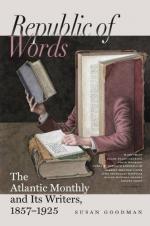It was about this time that the most widely known of his works, “The Bothie of Toper-na-Fuosich, a Long-Vacation Pastoral,” was written. It was published in 1848, and though it at once secured a circle of warm admirers, and the edition was very soon exhausted, it “is assuredly deserving of a far higher popularity than it has ever attained.” The poem was reprinted in America, at Cambridge, in 1849, and it may be safely asserted that its merit was more deeply felt and more generously acknowledged by American than by English readers. The fact that its essential form and local coloring were purely and genuinely English, and thus gratified the curiosity felt in this country concerning the social habits and ways of life in the mother-land, while on the other hand its spirit was in sympathy with the most liberal and progressive thought of the age, may sufficiently account for its popularity here. But the lovers of poetry found delight in it, apart from these characteristics,—in its fresh descriptions of Nature, its healthy manliness of tone, its scholarly construction, its lively humor, its large thought quickened and deepened by the penetrating imagination of the poet.
“Any one who has read it will acknowledge that a tutorship at Oriel was not the place for the author. The intense love of freedom, the deep and hearty sympathy with the foremost thought of the time, the humorous dealing with old formulas and conventionalisms grown meaningless, which breathe in every line of the ‘Bothie,’ show this clearly enough. He would tell in after-life, with much enjoyment, how the dons of the University, who, hearing that he had something in the press, and knowing that his theological views were not wholly sound, were looking for a publication on the Articles, were astounded by the appearance of that fresh and frolicsome poem. Oxford (at least the Oriel common




